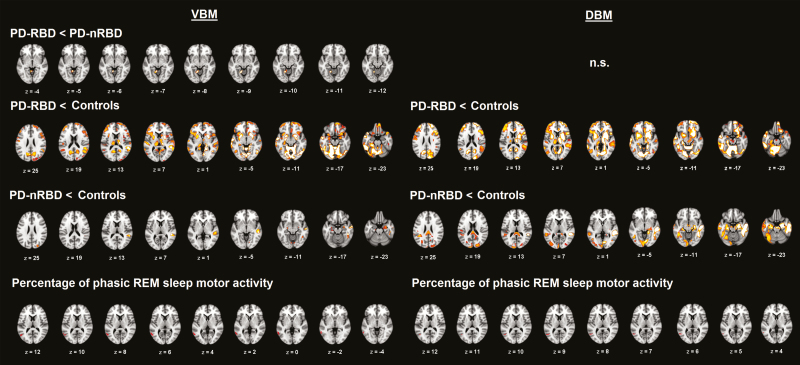Figure 2.
Results of volume abnormalities using voxel-based and deformation-based morphometry. Volume abnormalities between PD-RBD and PD-nRBD (first row), between PD subgroups and controls (second and third rows), and correlations between local volume and percentage of phasic REM sleep motor activity in people with PD (fourth row) are presented. Voxel-based results are presented on the left and deformation-based results on the right. The DBM contrast between PD subgroups did not reveal any significant differences. Results are displayed at p < 0.05 corrected for multiple comparisons (FWE-corrected), with age, gender, and education as covariates. UPDRS-III and MCI status were also included as covariates for the comparison between PD-RBD and PD-nRBD subgroups and for correlation analyses. The color bars indicate the −log p-values for between-group differences in volume between 1.3 in red (p < 0.05 FWE-corrected) and 3 in yellow (p < 0.001 FWE-corrected). Significant clusters resulting from correlation analyses with REM sleep motor activity in PD are marked in red only for display purposes. FWE = family-wise error; MCI = mild cognitive impairment; n.s. = not significant; PD-RBD = Parkinson’s disease with REM sleep behavior disorder; PD-nRBD = PD without RBD; UPDRS-III = Unified Parkinson’s Disease Rating Scale, Part III.

